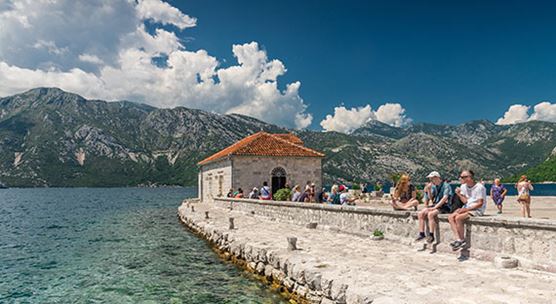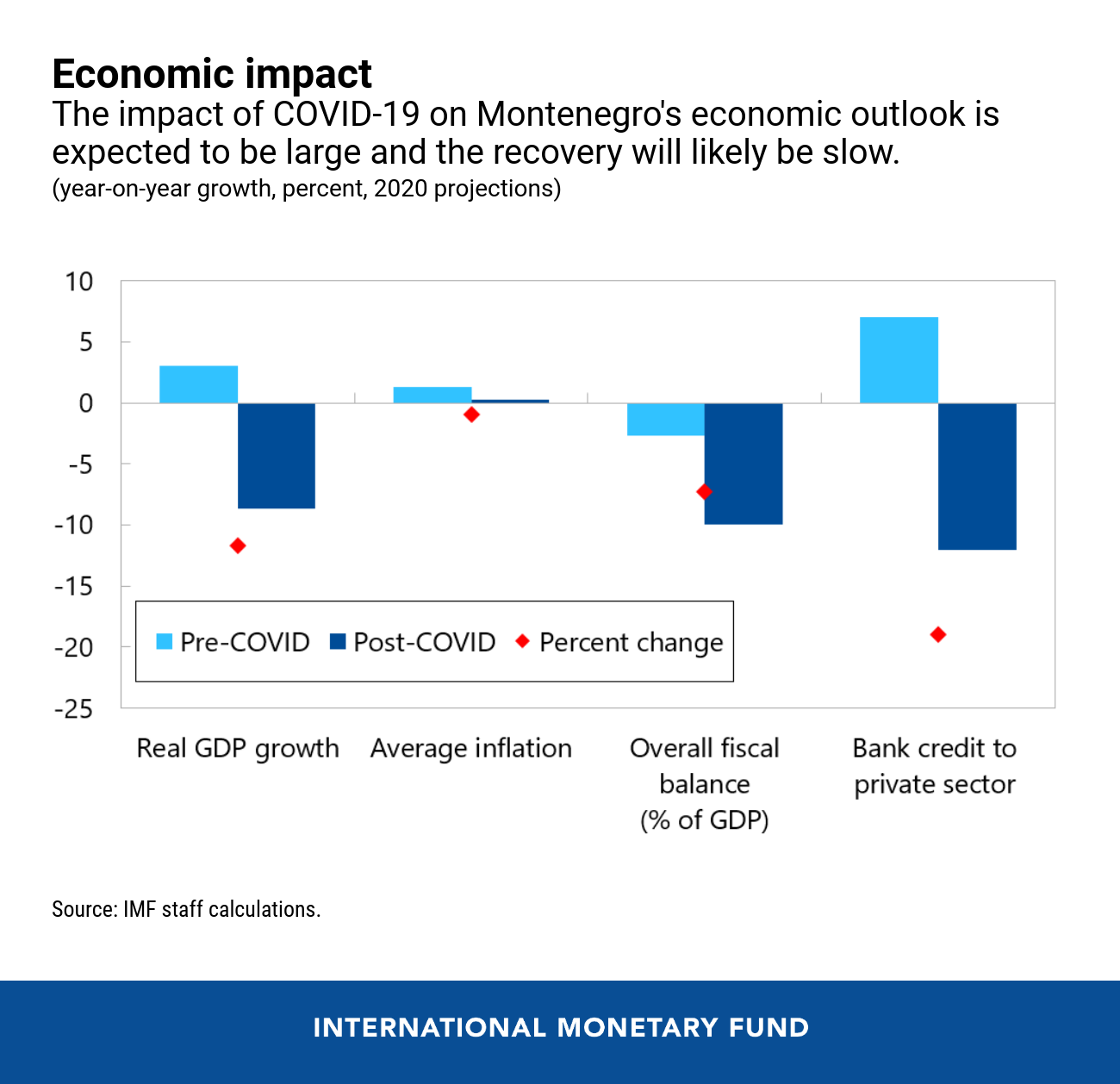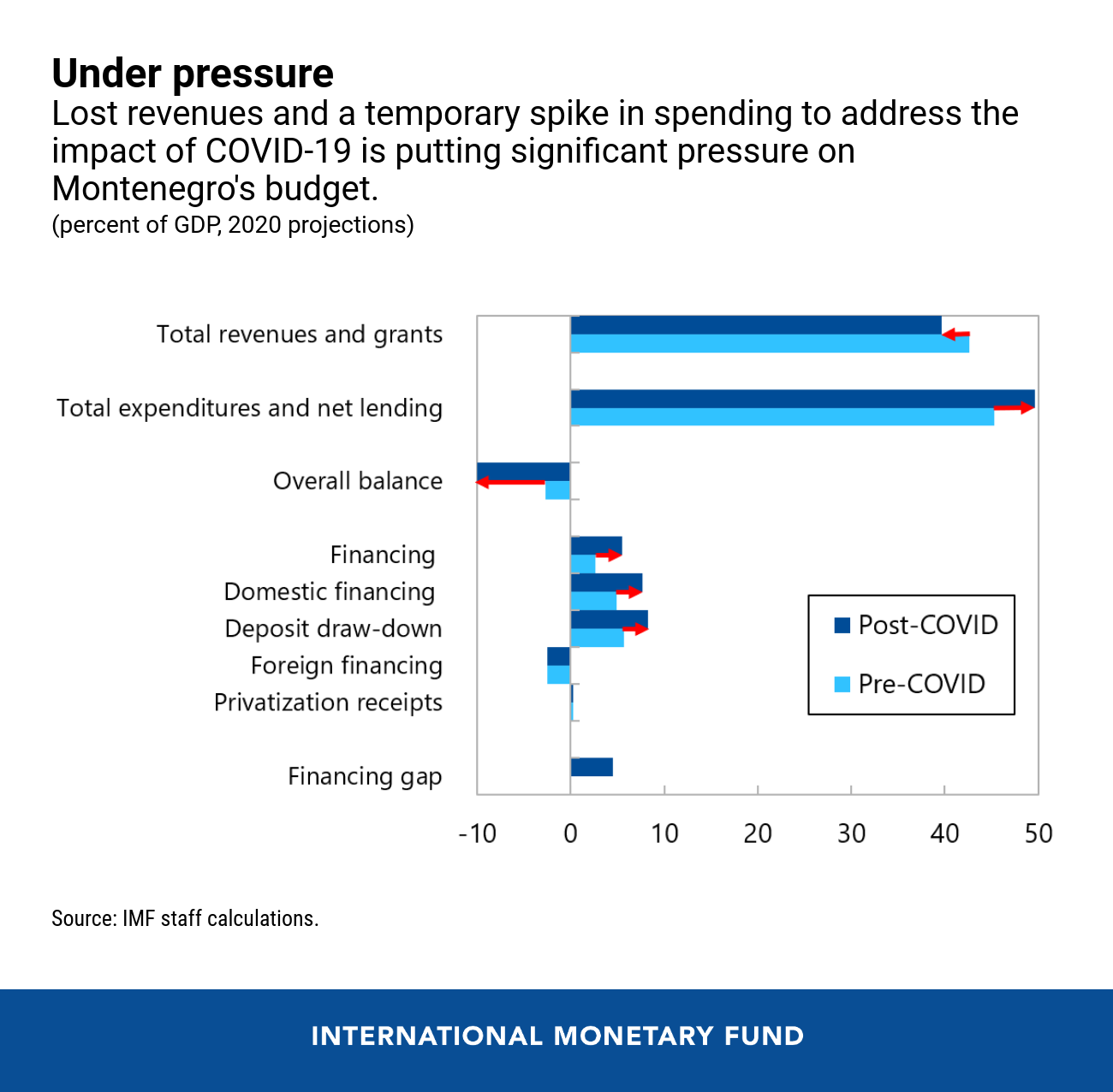
An island near the Bay of Kotor, Montenegro. The country’s tourism sector has been hit especially hard by the outbreak of COVID-19. (photo: Sergii Zarev/agefotostock/Newscom)
Combating the Impact of COVID-19 in Montenegro
July 2, 2020
Like many tourism-dependent countries, Montenegro has been hit hard from the effects of COVID-19. On June 24, 2020, the Balkan country received an emergency loan worth $83.7 million under the IMF’s Rapid Financing Instrument to help its economy weather the economic disruption caused by the collapse of tourism and to support higher health spending.
Related Links
As the COVID-19 pandemic began spreading in Europe in March, the Montenegrin government took swift and decisive measures to contain the virus, including by closing its borders, airports, seaports, schools, and non-essential businesses. Public gatherings were also banned.
These strong containment measures put the brakes on an economy that was growing steadily in the preceding months. With tourism accounting for about a fifth of its economy, the IMF projects that Montenegro will face its largest economic contraction—a nearly 9 percent drop in 2020—since independence in 2006.
Since June 1, Montenegro has reopened its borders to countries that have relatively low infection rates. Nevertheless, prospects for a recovery in global tourism remain highly uncertain, given the fluid evolution of the pandemic. In the short term, many factors will determine how tourism in Montenegro will shape up—the path of new infections, the relaxation of containment measures in countries where most tourists come from, the medical advancement of treatments, and the dent to disposable incomes globally caused by the crisis, among others. In the longer term, questions remain on how travel preferences could change long after the epidemiological risks are addressed.
IMF projections for 2020 currently predict a 50 percent drop in Montenegro’s tourism receipts relative to 2019, recovering to about 90 percent of 2019 levels in 2021. In what looks to be a lean summer season for the country this year, a larger than usual share of tourism is likely to originate from countries that are accessible to Montenegro by land. In previous years, visitors from neighboring Western Balkan countries comprised about 40 percent of total tourist arrivals to Montenegro and land border crossings accounted for three quarters of all entries by foreigners into the country.
Given all these uncertainties, the economy could take a few years to fully rebound to pre-pandemic GDP levels.
Policy response
The loss in tourism revenue and a temporary spike in government expenditures to address the fallout of the pandemic are straining public finances. Increases in spending will go toward essential healthcare purchases and other measures to support the economy, such as wage subsidies to sustain jobs and financial assistance to vulnerable households.
Financial sector measures have also been implemented to ease the burden on borrowers and increase the availability of funding in the economy.
Restoring the health of public finances
While the temporary increase in government spending is necessary, a return to careful fiscal management when the economy recovers is essential to lower public debt (projected to rise to almost 90 percent of GDP in 2020) to safer levels. Montenegro already has a recent and successful experience with managing their revenues and expenditures. Starting in 2017, the authorities had raised revenue and reduced spending in a growth-friendly manner to offset the substantial increase in debt associated with a large highway project.
It will be particularly important to carefully plan public investment, and to refrain from undertaking further large capital and infrastructure expenditures—including additional phases of the same highway project—until public debt is lowered. Also, any such investments should be fully and transparently justified by the returns they can generate for the people of Montenegro.
How IMF support can help
The IMF’s financial lifeline provides critical resources for essential healthcare spending and to protect the stability of the economy. The Rapid Financing Instrument also plays a catalytic role for other support, and further assistance is expected from other international financial institutions and development partners to help meet remaining financing needs, ease internal and external adjustments, and steer the recovery.









